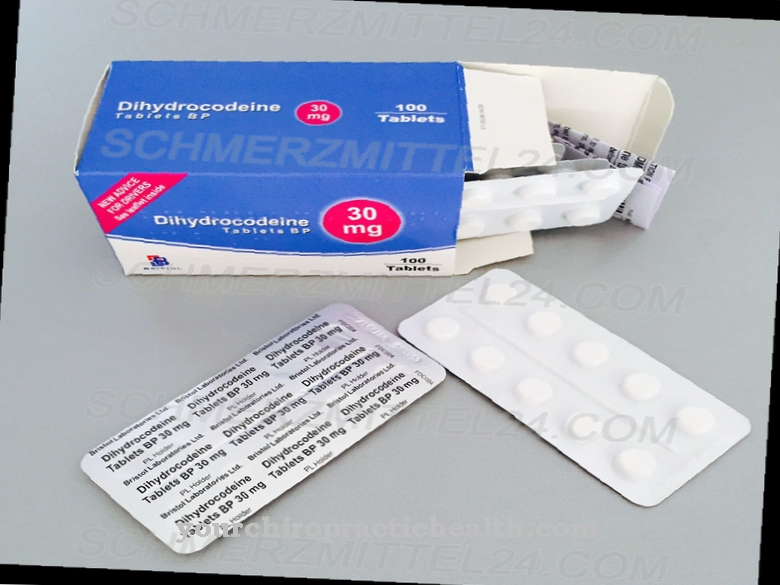Zidovudine is called chemical Azidothymidine and as such is a derivative of the nucleoside thymidine. From a pharmacological point of view, it is one of the reverse transcriptase inhibitors and, as such, is effective against the intracellular multiplication of HIV. It is distributed by the pharmaceutical company GlaxoSmithKline.
What is zidovudine?

The paths of science are sometimes unfathomable: In the 1960s, American researchers set to work to invent a new drug against cancer - the result was a drug that was effective against AIDS.
Zidovudine, along with other active ingredients, is now part of the combination therapy for HIV infection.
Pharmacological effect
The pharmacological effect of Zidovudine is based on an inhibition of nucleosidic reverse transcriptase, an enzyme that HI viruses absolutely need for their reproduction and pathogenicity.
The Human Immunodeficiency Virus (HIV), which causes AIDS (Acquired Immune Deficiency Syndrome), is one of the so-called retroviruses. It uses RNA as its genetic material, not DNA, as is the case with many other forms of life, such as humans. So that HIV can now integrate into the human cell and, as is usual with viruses, induce them to reproduce its genetic material and thus help it to reproduce, it needs reverse transcriptase:
It transcribes viral RNA into DNA (normally the other way around in biology, hence the term "reverse" in this case), which is then integrated into the normal course of cell metabolism and used to read new proteins and thus new viruses and to make.
Zidovudine is converted intracellularly to its active form, zidovudine triphosphate, and then has a high affinity for the reverse transcriptase of retroviruses, including HIV-1 and HIV-2. However, it must be remembered that other transcriptases that do their job in normal cell metabolism are also blocked by the drug with lower affinity, which is responsible for a large part of the side effects.
As an antimetabolite, zidovudine triphosphate is incorporated into the DNA of the provirus instead of a thymidine component and blocks further production at this point. The involved reverse transcriptase is blocked. In this way, however, zidovudine only inhibits the HIV viruses that are newly penetrating a host cell - what is already integrated into the cell genome, on the other hand, remains unaffected. Therefore, the agent must always be used in combination with others in order to be able to attack the virus infection in a really comprehensive way.
Medical application & use
The application of Zidovudine usually takes place as part of a broad-based HIV therapy, the so-called HAART (highly active anti-retroviral therapy).
After about six months of zidovudine therapy alone, resistance usually develops on the part of the HI viruses, which mutate in several steps and make their reverse transcriptase insensitive to the drug. In combination with other drugs, this development of resistance is made more difficult for the viruses because they are attacked from several sides at the same time.
Usually a triple combination is used, usually two nucleoside reverse transcriptase inhibitors with a non-nucleoside reverse transcriptase inhibitor or with a protease inhibitor.
The therapy must be closely monitored, especially the viral load and the CD4 cell count are important markers for the direct success of the therapy. Originally, such a treatment was only launched when the disease AIDS was in full bloom, nowadays there is an increasing tendency to start therapy at an earlier stage of the infection.
Risks & side effects
Zidovudine has some side effects that can occur during long-term therapy.
The fact that it was originally intended to be developed as a chemotherapeutic agent against cancerous tumors already shows that some side effects have to correspond to those of chemotherapy: Damage to the bone marrow is one of them, which turns into anemia and usually disappears two to four weeks after the start of therapy the sixth to eighth week as neutropenia, i.e. a decrease in white blood cells.
Neurotoxic effects include, for example, headaches (in 50 percent of those treated), insomnia and psychological changes. Long-term therapy can also lead to muscle pain. Gastrointestinal disorders, fever, and rash can also occur.
Some interactions must also be considered, including ASA (aspirin) and morphine can hinder the breakdown of zidovudine in the liver and thus cause increased drug concentrations. Other cytotoxic or bone marrow suppressant drugs naturally exacerbate the side effects of zidovudine.
























.jpg)



